In the 1924 silent film Three Weeks, Conrad Nagel tenderly picks up Aileen Pringle to carry her into the bedroom.
Lip readers noted that she appears to be saying, “If you drop me, you bastard, I’ll break your neck.”
In the 1924 silent film Three Weeks, Conrad Nagel tenderly picks up Aileen Pringle to carry her into the bedroom.
Lip readers noted that she appears to be saying, “If you drop me, you bastard, I’ll break your neck.”
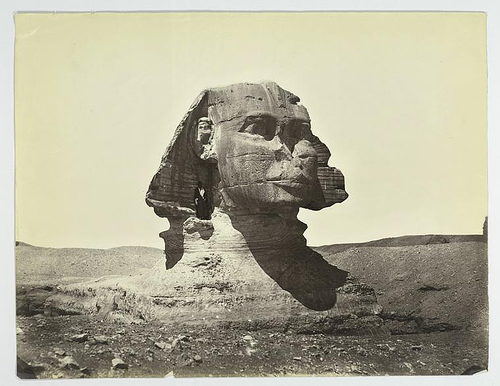
For most of its history, Egypt’s Great Sphinx lay buried up to its neck in sand. This photo was taken in 1867; the sphinx wasn’t fully dug out until 1925.
Strangely, we know very little about it. It’s one of the world’s largest statues, but no one knows who built it, or when, or whose likeness it bears. We’re not even sure what it is — we call it a sphinx, but we borrow that term from Greek mythology. A true sphinx would have the head of a woman.
No one knows what the ancient Egyptians called it, but its Arabic name, Abu al-Hôl, translates as “Father of Terror.” Maybe we should cover it up again.
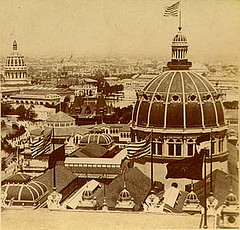
Wander too far away from the World’s Columbian Exposition of 1893 and you might disappear forever.
Herman Mudgett, an enterprising serial killer, built a row of three-story buildings near the Chicago fair and opened it as a hotel. Guests discovered — too late — that it was a maze of more than 100 windowless rooms, where Mudgett would trap them, torture them in a soundproof chamber, and then asphyxiate them with a custom-fitted gas line.
Then he’d send the bodies by chute to the basement, where he’d cremate them or sell them to a medical school.
This went on for three years, until a fire broke out and police and firemen discovered the trap. No one knows how many people Mudgett killed; he confessed to 27, but estimates go as high as 230.
He was hanged in Philadelphia in 1896.

Pearl Harbor as seen from a Japanese attack plane.
“I can run wild for six months,” Admiral Isoroku Yamamoto had predicted. “After that, I have no expectation of success.”
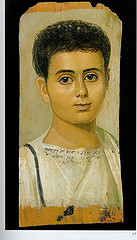
This is Eutyches, a young boy who died in Egypt during the Roman Empire. How do we know this? Because this portrait was stuffed inside his mummy.
This was actually a common practice in the Fayum region of ancient Egypt, and it’s given us some of the best-preserved paintings from ancient times.
Artists would paint the portraits on wooden panels, using hot, pigmented wax, and they’ve survived remarkably well in the region’s dry heat.
CAT scans show that the portraits match their mummies in age and sex, and they’re strikingly naturalistic, though reportedly a little formulaic.
Many, like Eutyches, were children, a sad mark of the era’s low life expectancy.
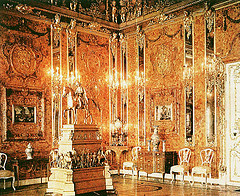
Finders keepers.
These amber panels, backed with gold leaf and mirrors, once dressed an entire chamber in the Catherine Palace near Saint Petersburg. More than a decade in the making, they covered 55 square meters and contained more than six metric tons of amber. Some called them the eighth wonder of the world.
The Nazis took them during World War II, but after that they disappeared. Postwar rumors have put them in bunkers, in mines, in submarines, in lagoons. One stone mosaic turned up in 1997 in West Germany, and its fellows were found in Königsberg Castle, where the Nazis had secreted them. But the rest of the “Amber Room” has simply disappeared — lost in a fire, still hidden, or safe in the hands of a lucky, and quiet, treasure hunter.
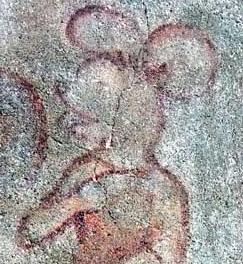
On Nov. 14, 2002, this image was discovered during restoration of a church’s exterior wall in Malta, Austria. It’s part of a 14th-century fresco depicting Saint Christopher, who is often shown accompanied by fabulous creatures.
Draw your own conclusions.
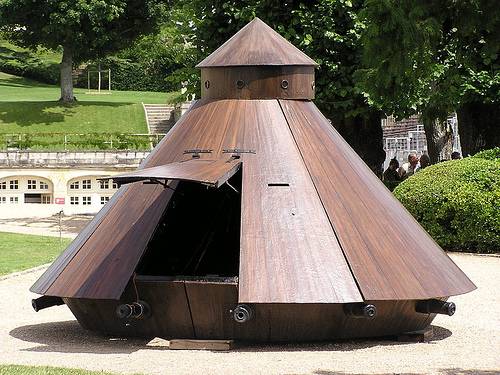
One more reason not to mess with Leonardo da Vinci — he designed this armored tank at the Château d’Amboise around 1516.
A secret hoard of $20 million in gold and silver lies buried somewhere near Roanoke, Va. That’s according to a coded message left by adventurer Thomas Jefferson Beale in the 1820s:
I have deposited in the county of Bedford, about four miles from Buford’s, in an excavation or vault, six feet below the surface of the ground, the following articles, belonging jointly to the parties whose names are given in number “3,” herewith:
The first deposit consisted of one thousand and fourteen pounds of gold, and three thousand eight hundred and twelve pounds of silver, deposited November, 1819. The second was made December, 1821, and consisted of nineteen hundred and seven pounds of gold, and twelve hundred and eighty-eight pounds of silver; also jewels, obtained in St. Louis in exchange for silver to save transportation, and valued at US$13,000.
The above is securely packed in iron pots, with iron covers. The vault is roughly lined with stone, and the vessels rest on solid stone, and are covered with others. Paper number “1” describes the exact locality of the vault, so that no difficulty will be had in finding it.
Unfortunately, no one has been able to decipher paper “1” or “3”, and a hundred years’ digging has turned up nothing. Is it a hoax? Who knows?
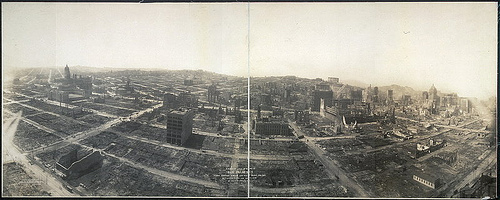
San Francisco after the 1906 earthquake. Photographer George Lawrence mounted a camera on a kite and flew it 2,000 feet over the ruins.
Of the city’s 400,000 residents, the quake killed 3,000 and left 225,000 homeless. For a time, Bank of America founder Amadeo Giannini met customers at a plank set across two barrels.